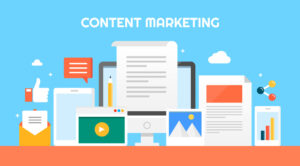By Lisa March
EdTech entrepreneurs across the country have had to embrace a ‘new normal’ in education. Due to the far-reaching effects of the pandemic, schools banked on digital tools and interactive learning in an unprecedented way. Plenty of people have recognized the huge potential of EdTech, particularly because it promises market sustainability, but who will ultimately capitalize on this potential? Who will capture the moment, define their value proposition in a compelling way, and win new business? Even with the wind at the back of EdTech, a defined go-to-market plan is needed to succeed, so we took the time to identify seven critical marketing strategies that should be adopted for success in this growth area.
1. Search Engine Optimization (SEO)
Playing the game the Google way
Let’s face it, everyone’s a little fixated on SEO, but do they understand how to deploy it to their advantage? Google is continually refining its algorithms to improve the search process and since those performing Google searches are very likely Google customers, it makes sense that Google wants to direct them to sites that are both relevant and reputable. So, what do we need to do to adapt and keep up?
Organic Keywords
The days when rankings could be manipulated through sheer volume of keyword-stuffed content are a thing of the past. Content needs to be well-written, informative, and humanized—with naturally placed keywords. Search engines follow the users who are buying your product, so attract users by writing original, thoughtful, useful content they want to see. Write for humans, not search engines. You are not a robot and neither are your customers.
Supersonic load speed
Did you know that our attention span has decreased from 10 to 3 seconds? Setting aside the fact that this is a terrible representation of us as a society, consider what a threat this poses for your website. Slow loading pages will directly affect your conversion rates; up to 40% of customers abandon sites that take over 3 seconds to load, and 80% will not try again. Declutter your page by removing anything that might affect load time like plug-ins, unnecessary sidebar widgets etc., and take advantage of companies like Ubersuggest who can run an audit on your page. Faster is definitively better.
2. Email Marketing
We covered the importance of email marketing as a campaign strategy, and how to cultivate good email habits in an earlier blog. There is a growing opinion that email marketing is losing its punch; that we are so inundated with low-value, high-frequency email traffic, we delete everything. Indeed, I am sure you have heard that social media is now the new black. Don’t believe everything you hear. Email marketing still holds the crown as the king of strategies, not least because 4 billion of the global population use email (over 250 million of which are in the U.S). There is a place for social media, but it does not comprehensively outweigh the benefits of email. Social media relies on the successful spread of content but frankly, I doubt I’m the only one who is irritated when my feed is increasingly hijacked by unwanted ads. Email marketing is vital to the EdTech industry, and its effectiveness outperforms other verticals. This is your bread and butter, so be smart.
- Do you have good mailing lists?
- Are you using email automation?
- Are you taking advantage of in-depth analytics about the performance of email marketing?
3. Content marketing
One of the most common marketing mistakes is a failure to adopt an approach that focuses on solving a problem. Avoid this pitfall by identifying the purpose of your product, the solution it provides, and what separates you from your competition. Then make full use of your content marketing to communicate this information to your customers. Progressive marketers are promoting an interesting shift away from commonly held marketing theories. Without discounting the obvious necessity and importance of your products, new thinking no longer believes that your product is enough, and attention is pivoting towards solution-based content marketing. This is not semantics; this is whole body marketing. Let’s back up a minute and think of marketing then vs. now. It was not that long ago that marketers dictated what the consumer saw (remember when we had no choice in which commercials we had to watch?), but the paradigm has changed and it is now the consumer who chooses. So, if consumers are choosing to go ad free, how are you going to get your product in front of them? In effect, how are you going to persuade someone who does not want to see any advertising, choose to see yours? The answer lies in your value-added content. Demonstrate an understanding of your consumer, the problems they face, and offer solutions to those issues. Be thoughtful here. Add value, gain trust, build your customer base.
- Add tangible value before and after the sale (blogs, how-to videos, product guides)
- Think ahead, what are the problems of tomorrow, and how can you help?
- Be transparent about marketing or product changes
- Track your results, encourage audience feedback, and adjust as appropriate
4. Video marketing
We are all irritated by inboxes that are stuffed with unwanted emails, and social media feeds hijacked by ads we never asked to see and our solution to that problem has been elegantly successful: we simply opt out. Our lack of engagement poses a massive problem for marketers who have had to reconsider what method of advertising will attract and maintain the attention of consumers. And it is video that has emerged as the unequivocal answer to that conundrum.
Video is an elastic concept, and because it’s multi-faceted, its potential is huge. When compared to static advertising, video is the runaway winner in terms of meeting the needs of today’s audience. Furthermore, 65% of us are visual learners and prefer to process new information visually. Video takes full advantage of this with its combination of moving imagery, sound, and capacity for added effects. Used correctly, it can be preemptive, neatly conceptualizing your product through visual demonstrations that answer questions consumers may have had, and eradicating the need for lengthy, explanatory paragraphs of text.
For an in-depth look at video’s influential role in marketing, consider the following:
- Cisco estimates that video will account for 82% of all internet traffic by 2022
- Video increases conversions by 39% and grows revenue 49% faster
- Video drives traffic to your website and improves dwell time
- Video fosters customer loyalty, and builds trust
5. Social Media
The art of conversation is dead. Long live social media. I jest, but everywhere you look, people are head down looking at their phones. There’s a high probability that they are looking at their social media feeds and it is high time your company made itself part of their experience. Social media platforms represent the easiest and perhaps the least expensive way of promoting your EdTech solution. Remember to avoid aligning your social media presence with an expectation of sales conversions; there are other places and spaces for that as you will learn in a minute. View it as a place to join the community you value, to communicate through conversation, and to raise your brand awareness. Don’t be discouraged if you think that you do not have the bandwidth to manage your accounts, it is time consuming and there are companies that can help. Consider hiring an outfit like Hootsuite. They can assume all the responsibility for the creation and sharing of your content on social platforms making them easier to administer. Your journey will begin by choosing the platform or platforms that work for your product. Once this has been established, you can begin to build a social media marketing campaign to promote your brand. Get yourself off to a good start by remembering these basic tenets.
- Content must be relevant and valuable to your target audience
- Find your voice, don’t be a salesperson, do be authentic
- Adopt, use and learn from analytics, you may have to adjust your schedule according to your data
- Think creatively: write a blog, educate through webinars, consider user-generated content
6. Pay Per Click Marketing (PPC)
Are you relying on your website to produce leads organically? Is it working? If not, you’ll probably need to add a line item to your marketing budget for a PPC digital advertising campaign. There are several PPC marketing providers but the most popular choice is Google Ads. Without getting into the weeds about the specifics of auctions and bidding, the essentials are this: marketing advertisers choose options from a menu according to where they want to concentrate their efforts, a decision that is based upon their campaign strategy.
- Focus on clicks: pay when someone clicks on your ad and is directed to your site
- Focus on impressions: pay by the number of times you choose for your ad to be shown
- Focus on conversions: pay per predetermined action on your website (e.g. a sale)
- Focus on views: restricted to video ads, pay for viewer engagement data
PPC is popular because it works for everyone. It’s like a perfect date. Advertisers can place their products in front of the people who want to buy them, and research shows that consumers are more than happy to click on a paid ad. Furthermore, and importantly I think, ad networks do not favor the highest bidder, they favor those ads that are the most popular, a result that is driven by quality and relevant content. Now would be a good time to go back and reread the section on content marketing.
7. Customer Journey Mapping
You may have a vague understanding of the importance of mapping your customer’s journey, but because it is an intrinsic part of the purchasing process for all of us, a more in-depth appreciation of the process is important. The bottom line is that we are now surrounded by so much choice that we are frequently forced to narrow down our options prior to making purchases. The means by which we do this, the research we perform to build confidence in our purchasing decisions, represents our journey. In EdTech, the buying cycle is not only longer—involving more decision-makers compared to other businesses—it also differs according to a company’s product and market. Your company’s specialization is looking for an equally specialized target audience which you are going to have to hone in on, through the performance of your own research. It is crucial to:
- Identify your buyer personas
- Map the buyer journey
- Nurture buyers through the sales funnel
The EdTech sales cycle is renowned for being protracted and it is in your best interest to make every effort to shorten it. Having done your homework and found your audience, your new goal is to streamline their individual journeys from awareness to purchase.
Do not trust your campaign to luck. If you need help with your marketing strategies, Partner in Publishing is here to offer you the support you need to create and deploy a successful campaign. Contact us today to learn more about partnering with PIP, supporters of the best and brightest in the EdTech space.
Lisa March is a Managing Partner at Partner in Publishing, or PIP.






